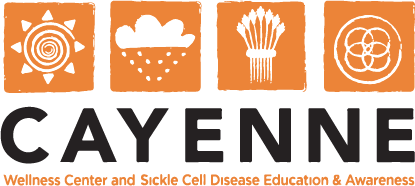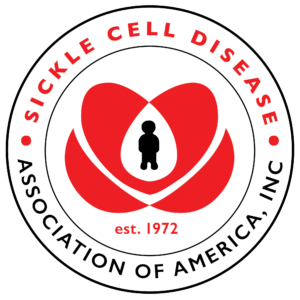Sickle Cell Disease (and Other Hemoglobinopathies)
What is Sickle Cell Disease?
Sickle cell disease (sickle cell anemia, sickle hemoglobin C disease, sickle hemoglobin D disease, sickle hemoglobin E disease, sickle hemoglobin O disease, and sickle beta thalassemia) is a group of hereditary disorders that affect the red blood cells. Two genes for the sickle hemoglobin must be inherited from one’s parents in order to have the disease. A person who receives a gene for sickle cell disease from one parent and a normal gene from the other has a condition called “sickle cell trait.” Sickle cell trait produces no symptoms or problems, on average, for most people. Sickle cell disease is not contagious; it cannot be contracted nor turn into the disease if you have sickle cell trait. The severity of sickle cell disease varies tremendously. Some people with sickle cell disease lead lives that are nearly normal. Others are less fortunate and can suffer from a variety of complications. Sickle cell disease and other hemoglobinopathies are present in all population groups but are more prevalent in persons of African, Mediterranean, Asian, Southeast Asian, Caribbean, and South and Central American origins. In California, the incidence of sickle cell disease is about 7,000.
People with sickle cell disease have red blood cells that contain mostly hemoglobin S, an abnormal type of hemoglobin. Sometimes these red blood cells become sickle-shaped (crescent-shaped) and have difficulty passing through small blood vessels. When sickle-shaped cells block small blood vessels, less blood can reach that part of the body. Tissue that does not receive a normal blood flow eventually becomes damaged. This is what causes the complications of sickle cell disease. There is currently no universal cure for sickle cell disease.
Hemoglobin is the main substance of the red blood cell. It helps red blood cells carry oxygen from the air in our lungs to all parts of the body. Normal red blood cells contain hemoglobin A. Hemoglobin S and hemoglobin C are abnormal types of hemoglobin. There are over 1,000 types of hemoglobin. Normal red blood cells are soft and round and can squeeze through tiny blood tubes (vessels). Normally, red blood cells live for about 120 days before new ones replace them.
People with sickle cell conditions make a different form of hemoglobin A called hemoglobin S (S stands for sickle). Red blood cells containing mostly hemoglobin S do not live as long as normal red blood cells (normally about 15 days). They also become stiff, distorted in shape, and have difficulty passing through the body’s small blood vessels. When sickle-shaped cells block small blood vessels, less blood can reach that part of the body. Tissue that does not receive a normal blood flow eventually becomes damaged. This is what causes the complications of sickle cell disease.
Types of Sickle Cell Disease
There are several types of sickle cell disease. The most common are: Sickle Cell Anemia (SS), Sickle-Hemoglobin C Disease (SC), Sickle-Hemoglobin D Disease (SD), Sickle-Hemoglobin E Disease (SE), Sickle Beta-Plus Thalassemia and Sickle Beta-Zero Thalassemia.
What is Sickle Cell Trait?
Sickle Cell trait (AS) is an inherited condition in which both hemoglobin A and S are produced in the red blood cells, always more A than S. Sickle cell trait is not a type of sickle cell disease. People with sickle cell trait are generally healthy.
Inheritance
Sickle cell conditions are inherited from parents in much the same way as blood type, hair color and texture, eye color and other physical traits. The types of hemoglobin a person makes in the red blood cells depend upon what hemoglobin genes the person inherits from his or her parents. Like most genes, hemoglobin genes are inherited in two sets – one from each parent.
Examples:
If one parent has Sickle Cell Anemia and the other is Normal, all of the children will have sickle cell trait.
If one parent has Sickle Cell Anemia and the other has Sickle Cell Trait, there is a 50% chance (or 1 out of 2) of having a baby with either sickle cell disease or sickle cell trait with each pregnancy.
When both parents have Sickle Cell Trait, they have a 25% chance (1 of 4) of having a baby with sickle cell disease with each pregnancy.
How will I know if I have the Trait?
A SIMPLE BLOOD TEST followed by a laboratory technique called Hemoglobin Electrophoresis will determine the type of hemoglobin you have. When you pass an electric charge through a solution of hemoglobin, distinct hemoglobins move different distances, depending on their composition. This technique differentiates between normal hemoglobin (A), Sickle hemoglobin (S), and other different kinds of hemoglobin (such as C, D, E, etc.).
Medical Problems
Sickle cells are destroyed rapidly in the body of people with the disease causing anemia, jaundice and the formation of gallstones.
The sickle cells also block the flow of blood through vessels resulting in lung tissue damage (acute chest syndrome), pain episodes (arms, legs, chest and abdomen), stroke and priapism (painful prolonged erection). It also causes damage to most organs including the spleen, kidneys and liver. Damage to the spleen makes sickle cell disease patients, especially young children, easily overwhelmed by certain bacterial infections.
Treatment
Health maintenance for patients with sickle cell disease starts with early diagnosis, preferably in the newborn period and includes penicillin prophylaxis, vaccination against pneumococcus bacteria and folic acid supplementation.
Treatment of complications often includes antibiotics, pain management, intravenous fluids, blood transfusion and surgery all backed by psychosocial support. Like all patients with chronic disease, patients are best managed in a comprehensive multi-disciplinary program of care.
Blood transfusions help benefit sickle cell disease patients by reducing recurrent pain crises, risk of stroke and other complications. Because red blood cells contain iron, and there is no natural way for the body to eliminate it, patients who receive repeated blood transfusions can accumulate iron in the body until it reaches toxic levels. A complication of blood transfusions is transfusional iron overload. The body does not have a way to get rid of iron received from blood transfusions.
An agent that chelates iron is therefore needed to get rid of excess iron in the body. There are two agents. One agent is given intravenously and the other is by mouth. It is important to remove excess iron from the body, because it can gather in the heart, liver, and other organs and may lead to organ damage. Treatments are available to eliminate iron overload.
Patients with sickle-cell disease (SCD) receiving chronic transfusions of red blood cells are at risk of developing transfusional iron overload over time. Transfusional iron overload is characterized by an increase of labile plasma iron (i.e., non-transferrin bound iron) in the body, which can lead to functional impairment in vital organs. The organs that are at risk of damage due to transfusional iron overload include the liver, heart, pancreas, thyroid, pituitary gland, and other endocrine organs. Buildup of labile plasma iron in these organs can lead to hepatic cirrhosis, cardiomyopathy, diabetes mellitus, hypoparathyroidism, impaired growth, infertility and hypogonadism.
FDA Approved Treatments for Sickle Cell Disease
Brand names: Droxia® Hydrea® Siklos®
Hydroxyurea is used to reduce the frequency of painful crises and reduce the need for blood transfusions in adults and children 2 years of age and older with sickle cell anemia. It is also used to treat several types of cancer (such as chronic myelogenous leukemia, squamous cell carcinomas).
Research studies show that hydroxyurea lowers the following:
- The numbers of acute chest syndrome events
- The number of pain crises by 50%
- The need for blood transfusions
- The number of trips to the hospital
Hydroxyurea also might prevent damage to the spleen, kidneys, lungs, and brain. It was first tested in sickle cell disease in 1984.
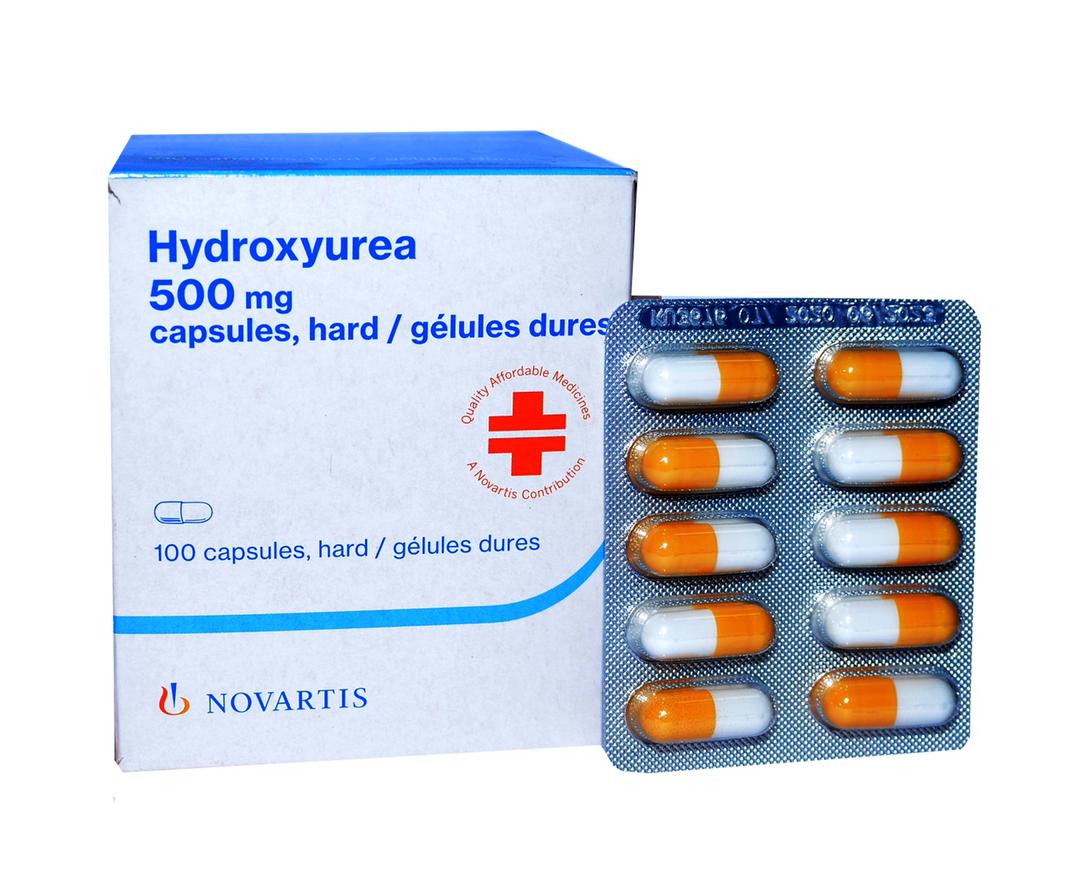
How does it work? Hydroxyurea treatment helps the red blood cells stay round and flexible. This lets them travel more easily through tiny blood vessels. In part, this happens because hydroxyurea increases the amount of fetal hemoglobin (Hb F) in red blood cells. Newborn babies have Hb F when they are born. Hb F helps protect them from sickle cell complications (health problems) during the first few months of life. With an increased amount of Hb F, red blood cells are less likely to change into the sickle or banana shape. In most people, the amount of Hb F decreases after the first few months of life. Some people have more Hb F than others. People with sickle cell disease who have higher levels of Hb F usually have fewer complications of the disease.
Hydroxyurea is given by mouth one (1) time each day. It comes in liquid or capsule form. The U.S. Food and Drug Administration (FDA) has approved it for the treatment of adults with severe sickle cell disease. Medical centers have carried out research studies that demonstrated the safety of hydroxyurea therapy for young children and infants with sickle cell disease.
(L-glutamine oral powder)
Endari™ is the first and only approved treatment for Sickle Cell Disease in pediatric patients 5 years and older and the first in nearly 20 years for adults. On July 7, 2017, the U.S. Food and Drug Administration approved Endari™.
Endari™ is an amino acid indicated to reduce the acute complications of sickle cell disease in adult and pediatric patients 5 years and older.
Endari’s mechanism of action:
The L-glutamine amino acid in Endari™ reduces oxidative stress and acute complications. It also participates in the formation of proteins, glutamate, amino sugars and nucleotides.
The drug is formulated as a white crystalline powder and packed in paper-foil-plastic laminate packets. The recommended dose is between 5g and 15g orally, twice a day, depending upon body weight.
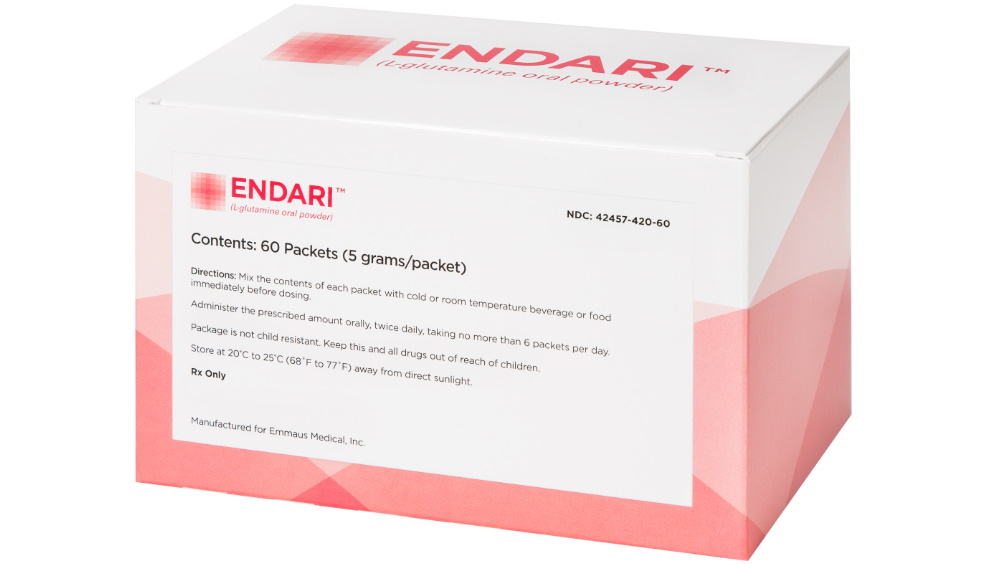
The U.S. Food and Drug Administration (FDA) approved Novartis’ Adakveo (crizanlizumab) to decrease the frequency of vaso-occlusive crises (VOCs), or pain crises, in adults and children age 16 years and older with sickle cell disease. Novartis indicates it expects to make the therapy available in the coming weeks.
Sickle cell disease is caused by a genetic defect in the gene that codes for hemoglobin that causes red blood cells to have a sickle shape, which affects how they carry oxygen. It also is associated with chronic inflammation, higher levels of cell adhesion proteins, including P-selectin, making the blood vessels, and some blood cells stickier and tend to cluster in the bloodstream. This can lead to acute pain episodes called VOCs, in addition to life-threatening complications. Those life-threatening conditions include stroke, vision loss, blood clots in the lungs, and infections.
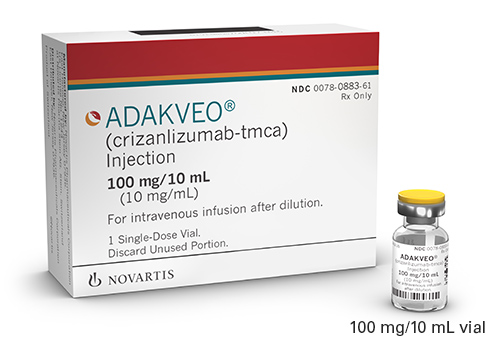
Adakveo is a monoclonal antibody that binds to P-selectin on the surface of the activated endothelium—the inside walls of blood vessels—and platelets. The approval was based on the results of the 52-week SUSTAIN trial. The trial showed that Adakveo lowered the median annual rate of VOCs to 1.63 compared to 2.98 for the placebo group, a reduction of 45%.
“The approval of Adakveo marks a new era in the treatment of sickle cell disease, a genetic condition that places an extraordinary burden of unpredictable pain crises on patients and their families,” said Susanne Schaffert, president of Novartis Oncology. “The stories we have heard from patients about their sickle cell pain crises are devastating. We are pleased to help reimagine medicine together with the sickle cell community and offer new hope for fewer VOCs.”
Brand name: Casgevy
On Dec. 8, 2023, the U.S. Food and Drug Administration (FDA) approved Casgevy, a cell-based gene therapy for sickle cell disease (SCD). These gene therapy approvals are the first of their kind available to individuals with SCD in the United States. Casgevy is approved for people ages 12 and up with sickle cell disease SS and S-beta-zerothalassemia; the FDA indicates that sickle cell disease SC is not included.
Research studies show that gene therapy has been known to:
- Reduce the number of hospitalizations for vaso-occlusive crises (after gene therapy, nearly all patients were free of hospitalizations for at least nine consecutive months)
- Reduce acute episodes of sickle cell pain within a few years of administration
- Improve health-related quality of life burden (improvements physically, emotionally, socially, and functionally)
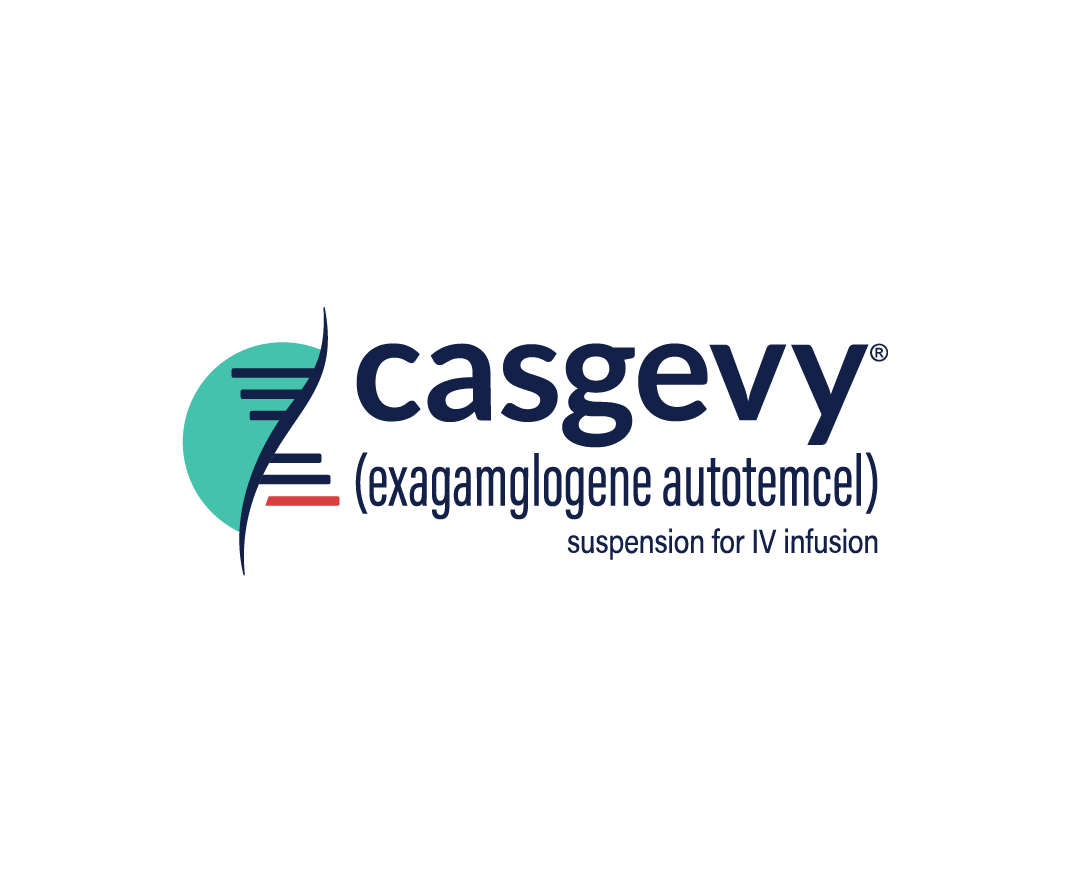
Gene therapy is considered “potentially curative,” but more data is needed to understand its impact and patient prognosis.
How does it work? Casgevy relies on gene editing, the first of its kind. The therapy is given as a one-time infusion. The whole procedure takes about a year. It is similar to autologous bone marrow transplantation and does not require a donor.
When will it be available? Please talk to your healthcare provider for more information on how to access gene therapies such as Casgevy.
Brand name: Lyfgenia
On Dec. 8, 2023, the U.S. Food and Drug Administration (FDA) approved Lyfgenia, a cell-based gene therapy for sickle cell disease (SCD). These gene therapy approvals are the first of their kind available to individuals with SCD in the United States. Lyfgenia is approved for people ages 12 and up with sickle cell disease SS and S-beta-zero-thalassemia; the FDA indicates that sickle cell disease SC is not included.
Research studies show that gene therapy has been known to:
- Reduce the number of hospitalizations for vaso-occlusive crises (after gene therapy, nearly all patients were free of hospitalizations for at least nine consecutive months)
- Reduce acute episodes of sickle cell pain within a few years of administration
- Improve health-related quality of life burden (improvements physically, emotionally, socially, and functionally)
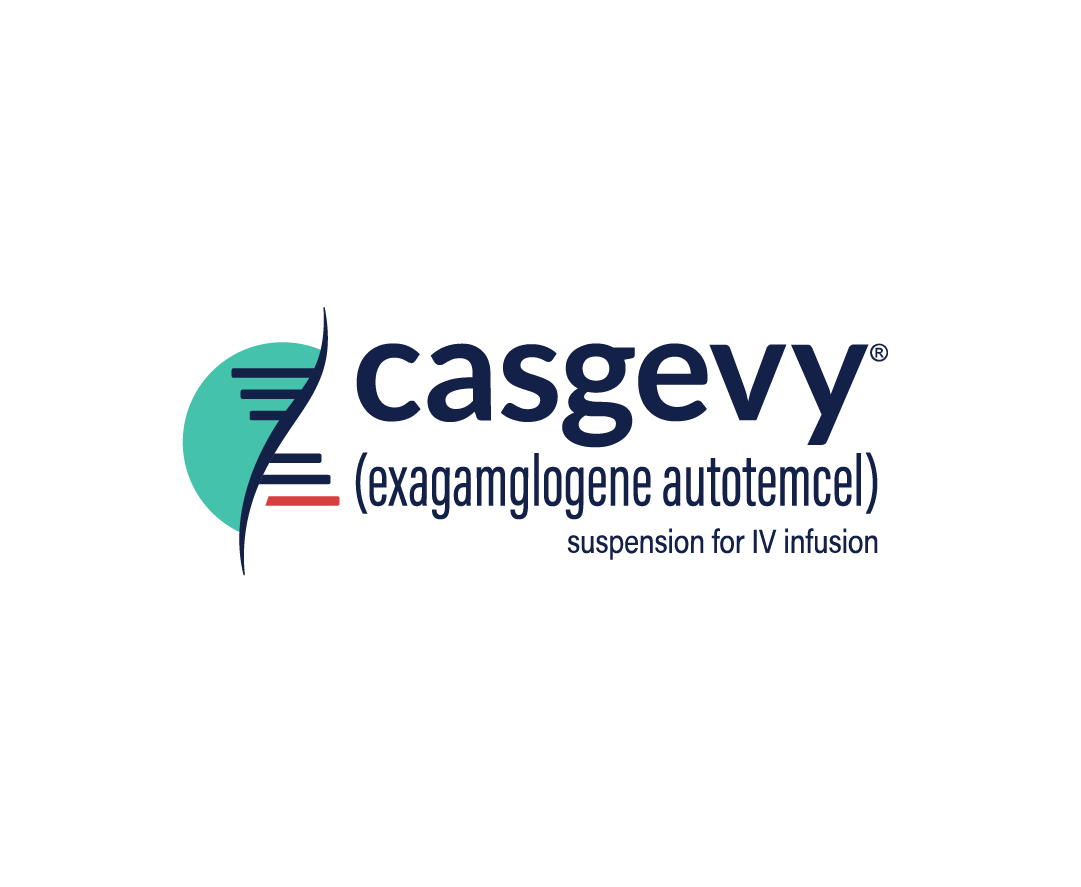
Gene therapy is considered “potentially curative,” but more data is needed to understand its impact and patient prognosis.
How does it work? Lyfgenia uses gene addition. The therapy is given as a one-time Infusion. The whole procedure takes about a year. It is similar to autologous bone marrow
transplantation and does not require a donor.
When will it be available? Please talk to your healthcare provider for more information on how to access gene therapies such as Lyfgenia.
Gene therapy became available in 2024. Download a Printable Brochure
Sickle Cell Disease is a Global Public Health Issue (taken from SCDAA)
In the United States people are often surprised when they learn that a person who is not African American has sickle cell disease. The disease originated in at least 4 places in Africa and in the Indian/Saudi Arabian subcontinent. It exists in all countries of Africa and in areas where Africans have migrated.
It is most common in West and Central Africa where as many as 25% of the people have sickle cell trait and 1-2% of all babies are born with a form of the disease. In the United States with an estimated population of over 270 million, about 1,000 babies are born with sickle cell disease each year. Approximately 100,000 individuals in the United States have sickle cell disease and 3 million have sickle cell trait.
The transatlantic slave trade was largely responsible for introducing the sickle cell gene into the Americas and the Caribbean. However, sickle cell disease had already spread from Africa to Southern Europe by the time of the slave trade, so it is present in the Portugual, Spanish, French Corsicans, Sardinians, Sicilians, mainland Italians, Greeks, Turks, and Cypriots population. Sickle cell disease appears in most of the Near and Middle East countries including Lebanon, Israel, Saudi Arabia, Kuwait, and Yemen. The condition has also been reported in India and Sri Lanka. Sickle cell disease is an international health problem and truly a global challenge.
All of these countries must work together to solve the problem and find effective treatments and ultimately a cure.

